Vegetable-based Lasagna
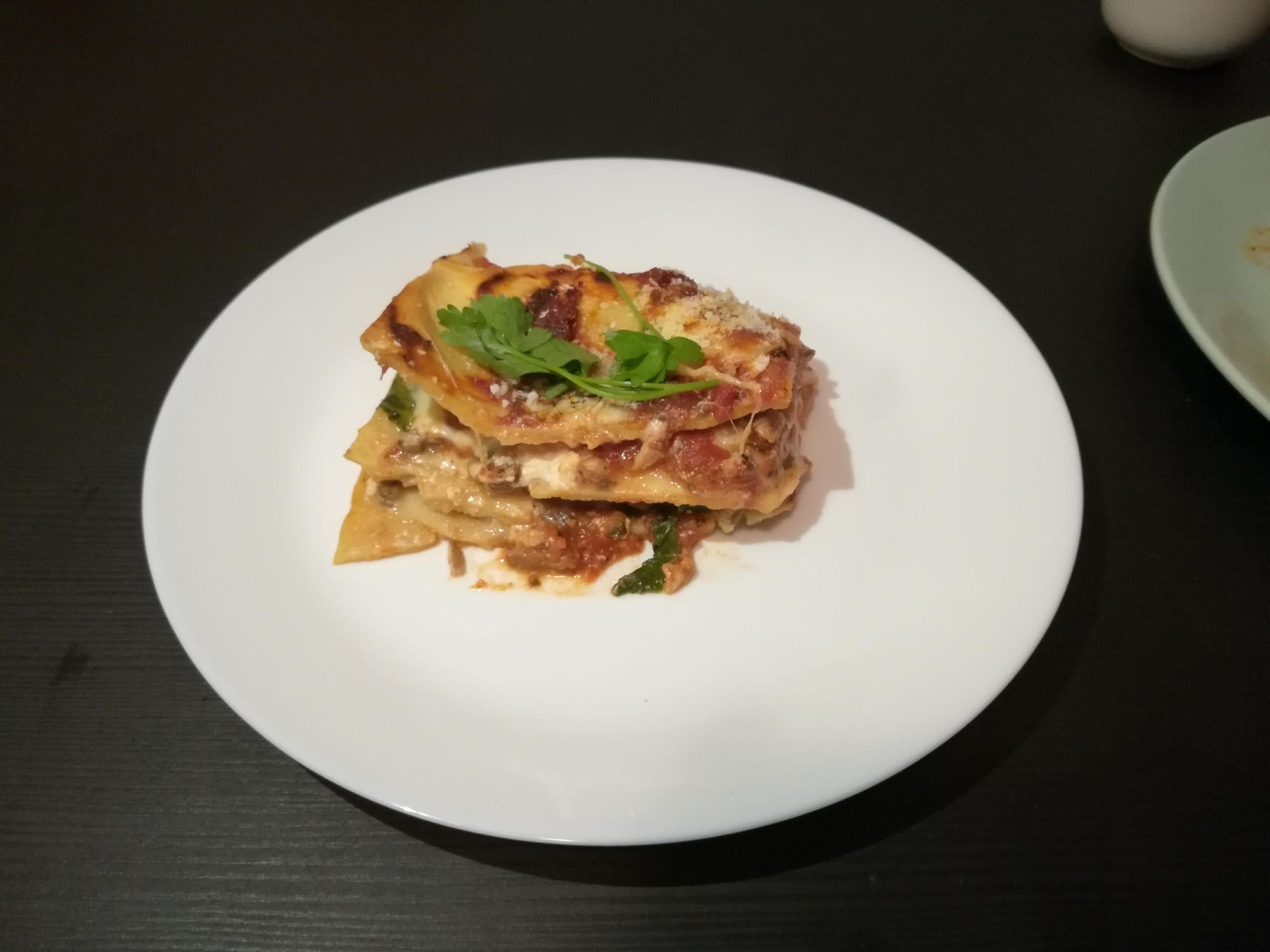
As part of a Quantum Lion challenge, we (aeghrur, RZ, and I) make a vegetable-based lasagna. With the absense of meat, we chose to focus on the strong flavors of mushroom and eggplant.
Making the noodles
Ingregients
- 4 eggs (240 g)
- Flour (1.5x the weight of the eggs - in this case, 360 g)
- Multiple pinches of salt
Methodology
The flour was formed into a well on a chopping board. The eggs were cracked and mixed inside this well.
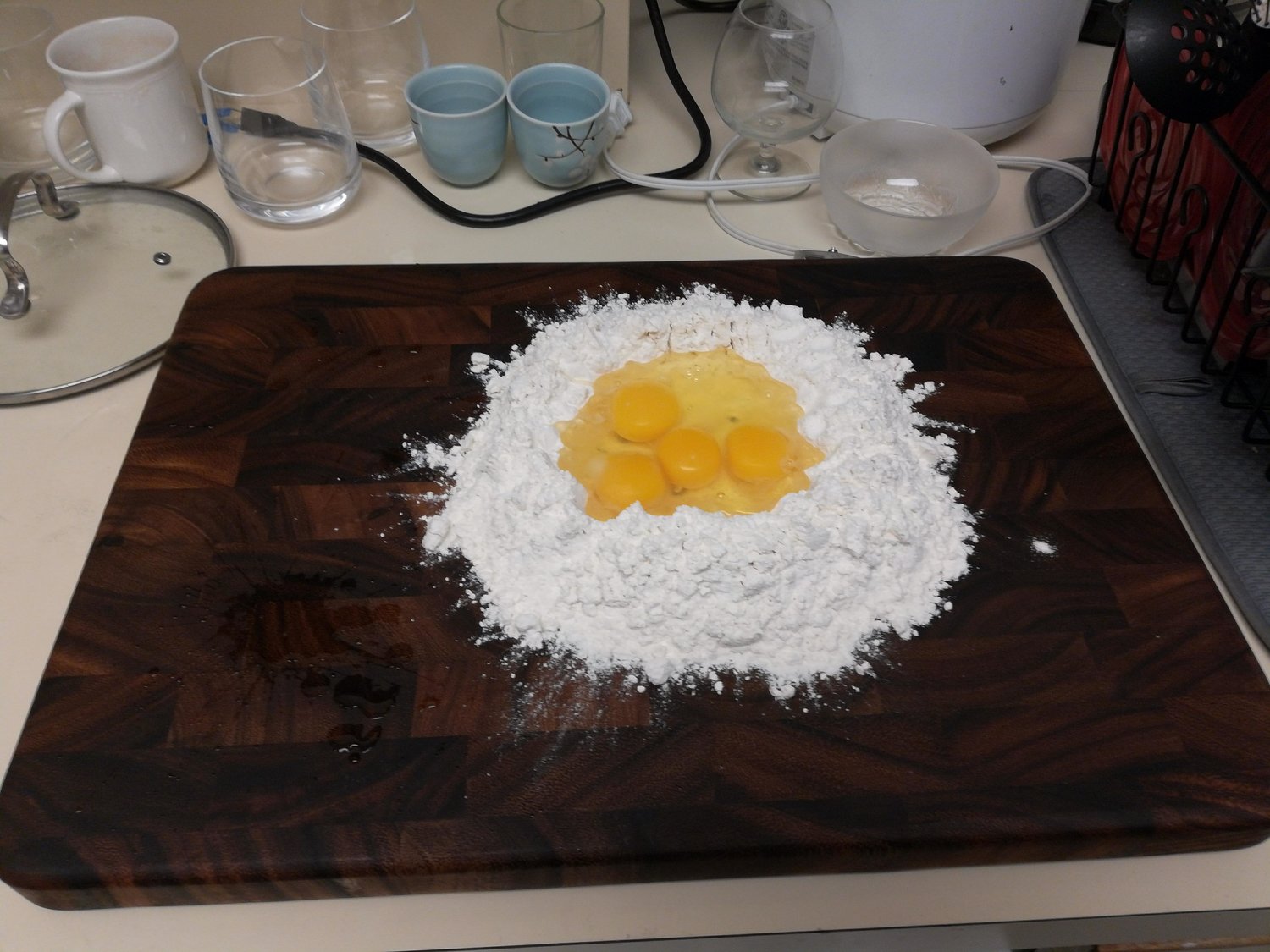
The flour will slowly become incorporated into the egg mixture. Continue mixing until the structure is somewhat malleable and holds its shape. At this point, fold the flour inside and start kneading.
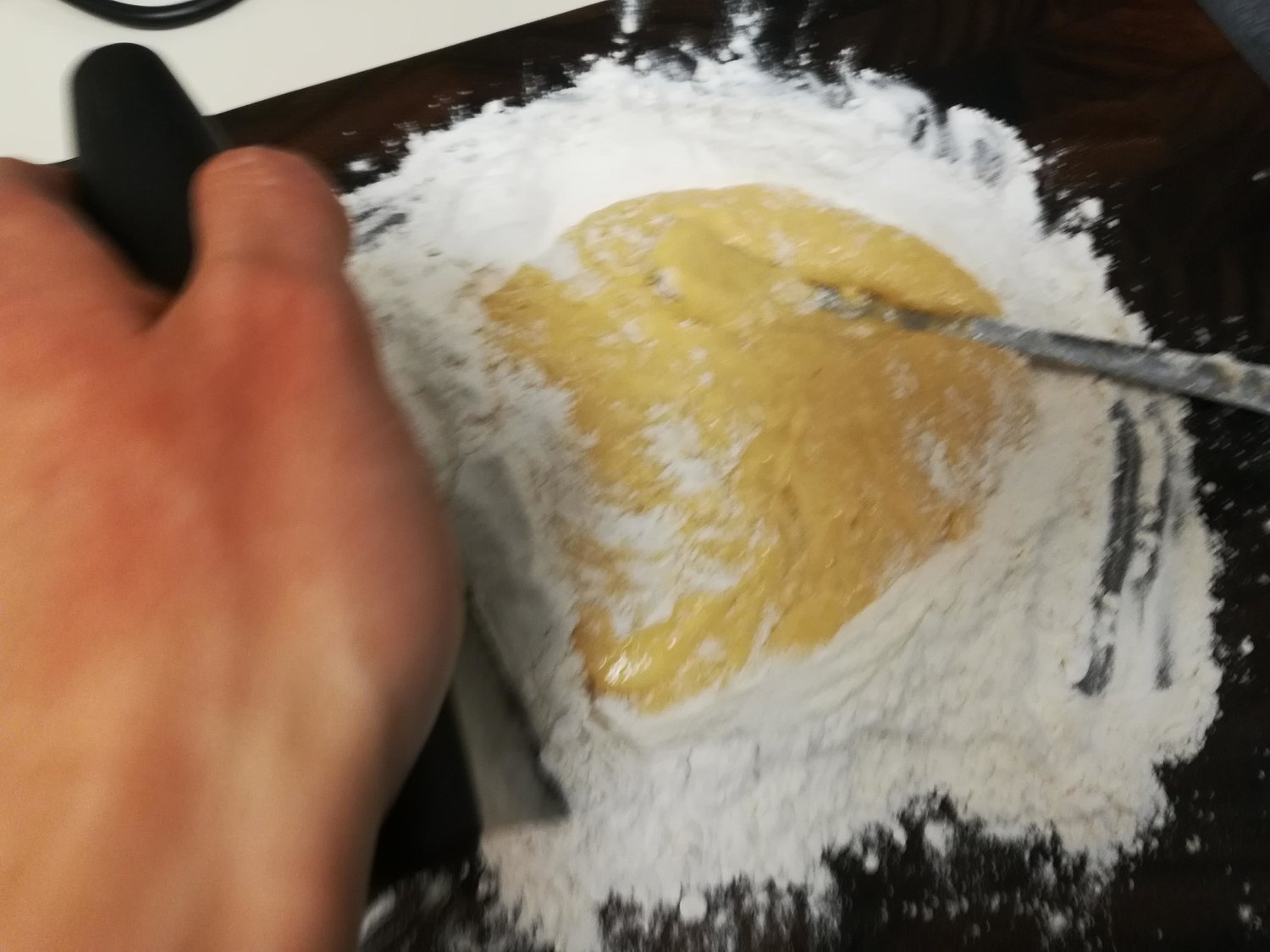
The dough was split into 6 small balls and wraped immediately with plastic wrap. It was then chilled in the fridge for a couple hours.
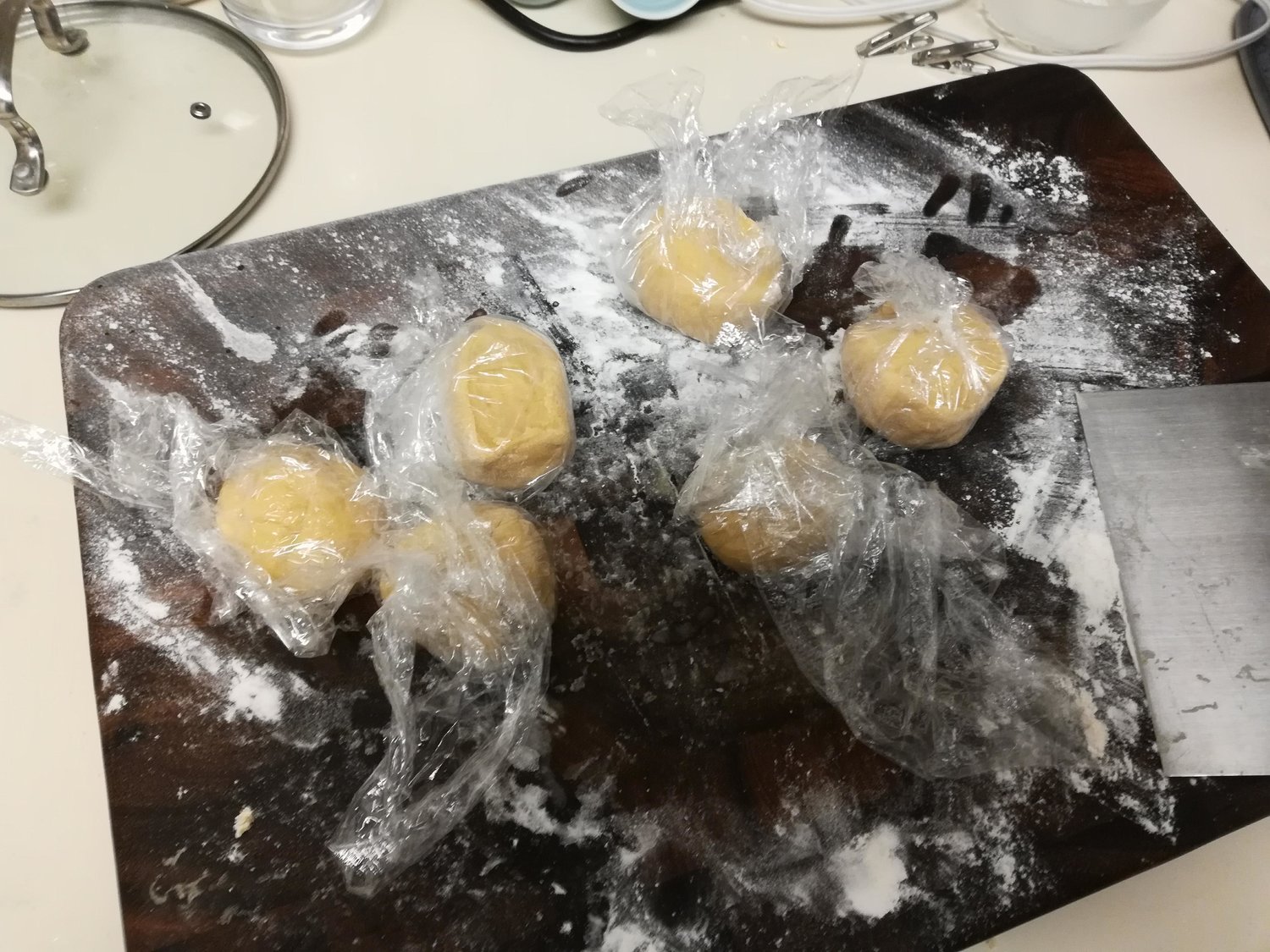
After removal from the fridge, each ball was rolled into a lasagna noodle. The ends were chopped off for aesthetic purposes.
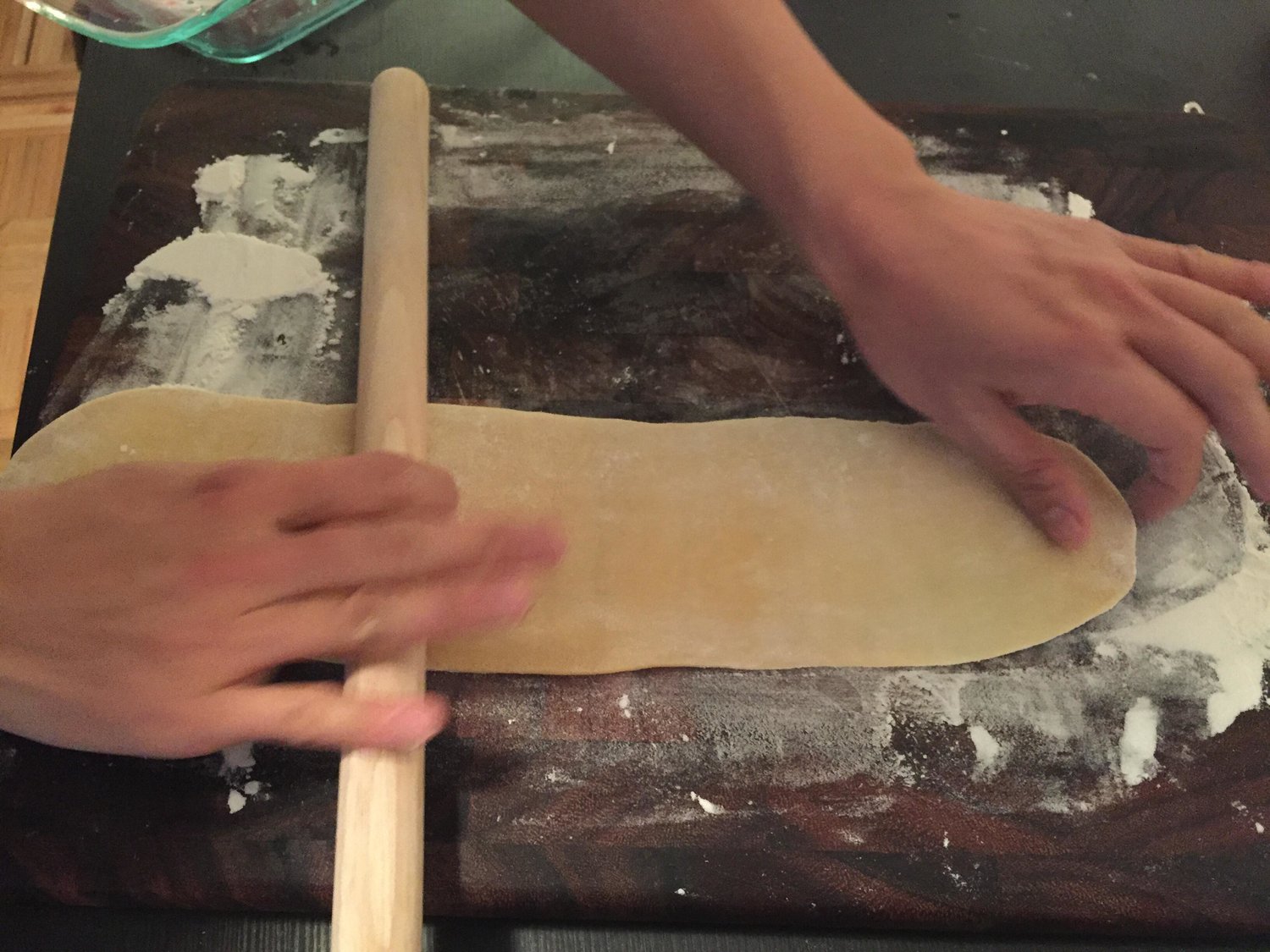
The end result is 6 beautifully crafted lasagna noodles.
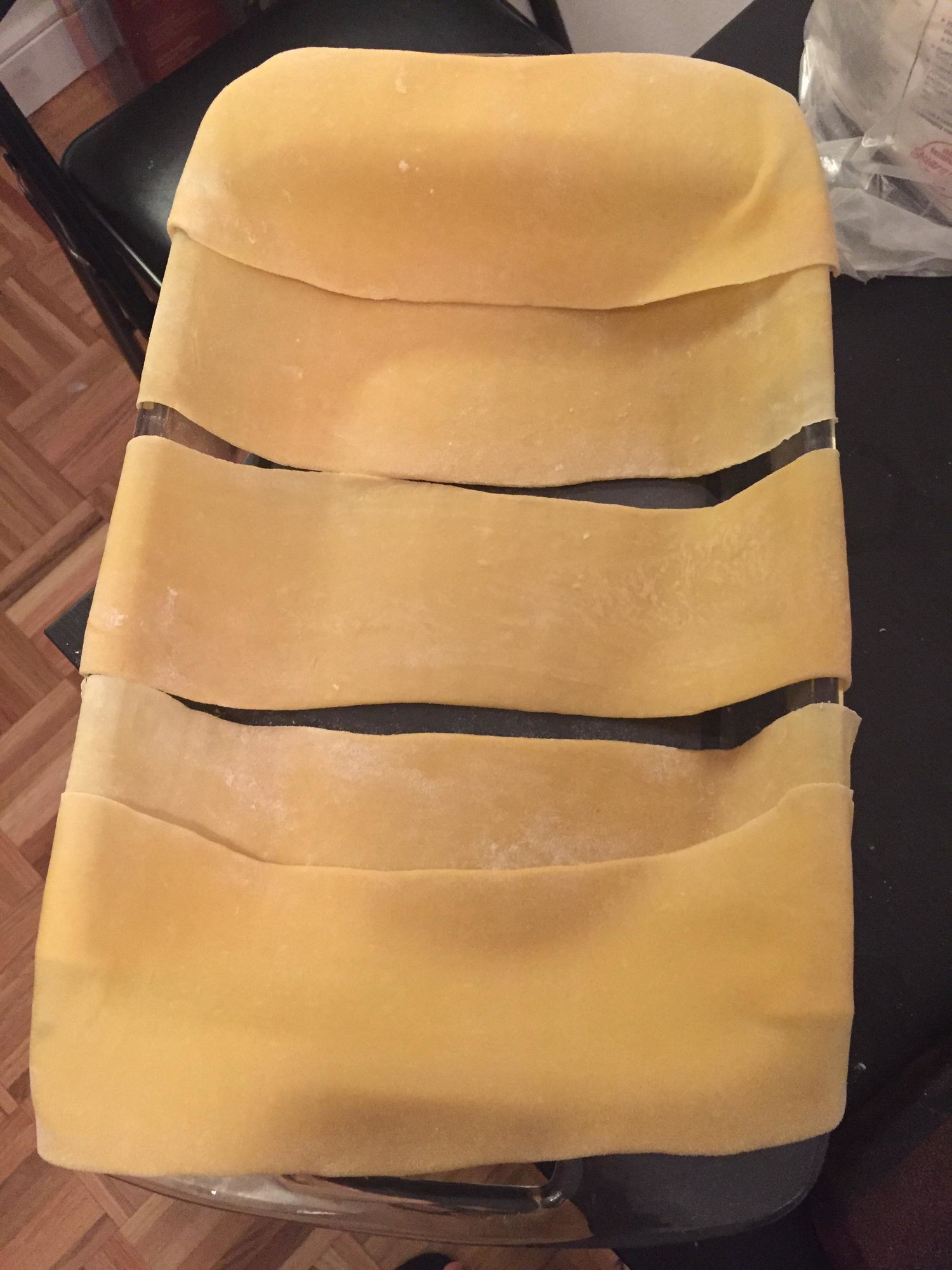
Making the lasagna
Ingredients
- Ricotta cheese
- Whole milk mozarella
- A small amount of grated parmesan cheese
- Shiitake mushrooms
- Cremini mushrooms
- One Eggplant
- One small can of tomato paste
- One 28 oz can of whole San Marzano tomatoes
- A dash of worchestershire sauce
- A dash of fish sauce
- Half cup white wine
- 3 or 4 shots of gin
- Spinach
- Parsley
- One onion
- Salt
- Black pepper
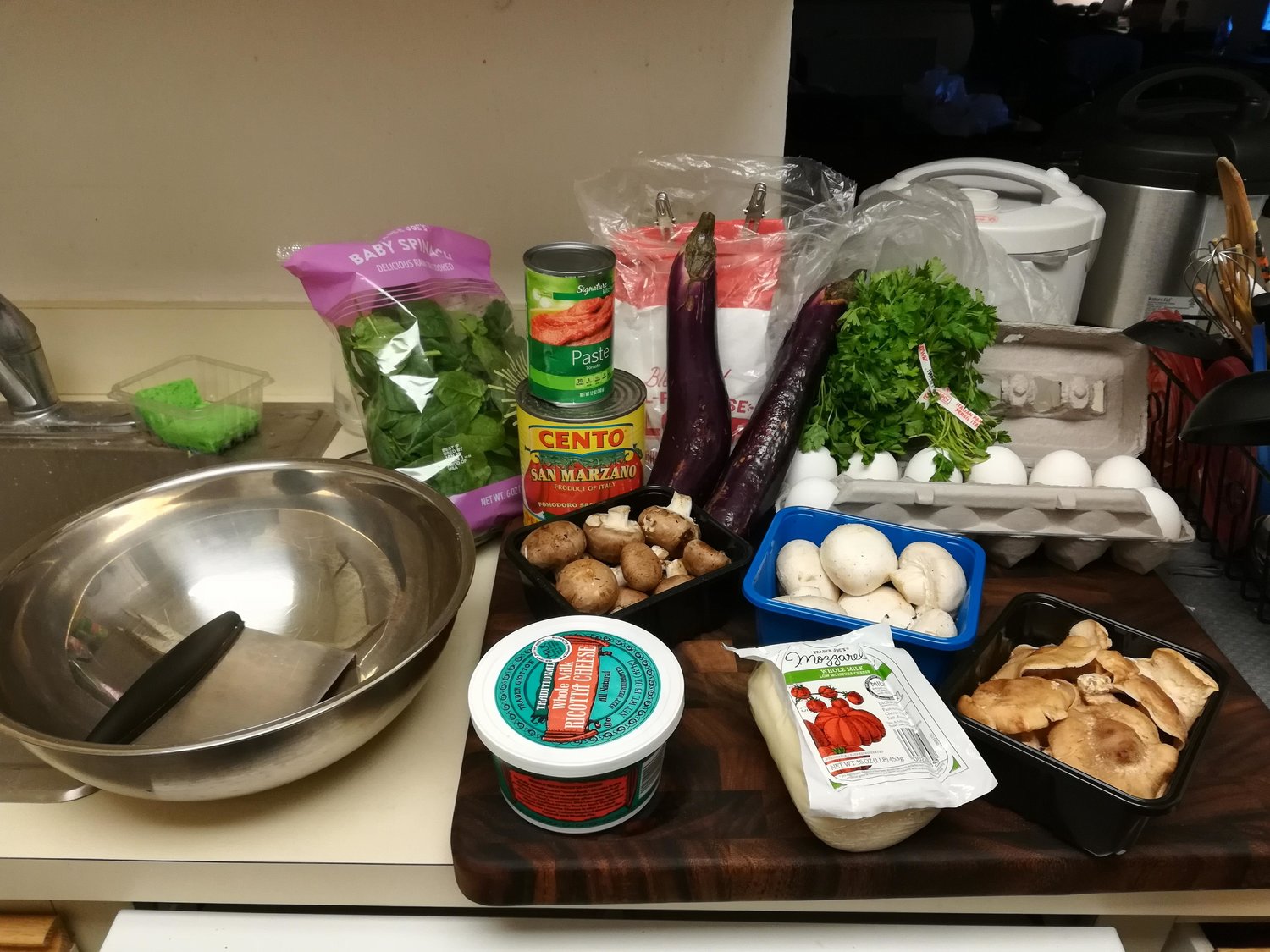
Making the sauce
This is the easiest step, as it just involves dumping several ingredients into a pot. We just emptied the contents of the two cans of tomato products into the pot, then added the white wine and the gin (we used Tanqueray). Half an onion was chopped, browned, then added to the sauce. Some black pepper was also added to the pot. Finally, dashes of both fish sauce and worchestershire sauce were added to the pot in order to provide some balance to the strong tomato taste. The heat was turned on and the pot was left alone to reduce.
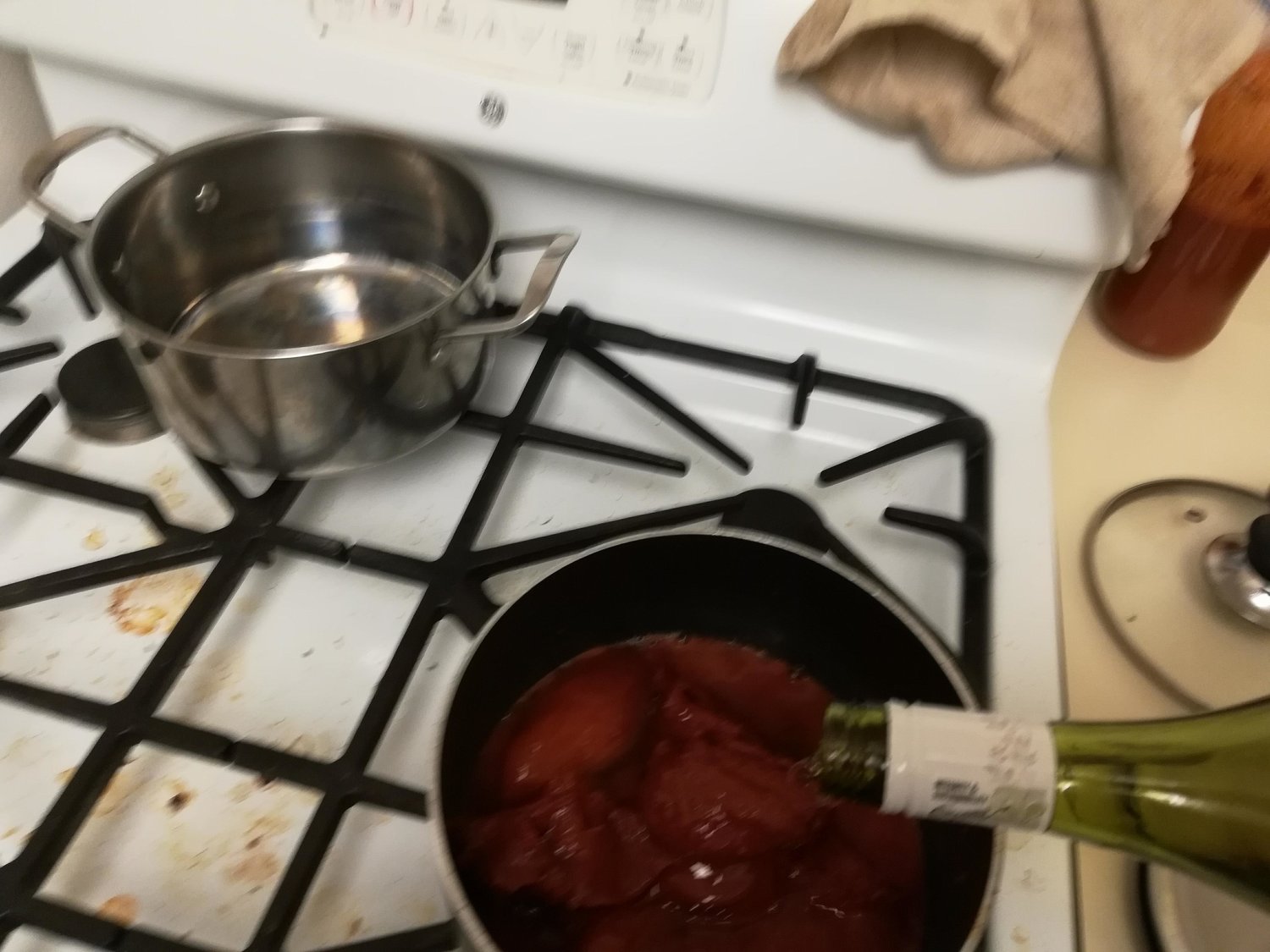
Making the filling
Half an onion was chopped and browned. The shiitake and cremini mushrooms were chopped into small chunks. These three ingredients were then mixed.
Separately, an eggplant was thinly sliced.
Again separately, the mozarella cheese was chopped into chunks.
Construction
This is the most fun step. We constructed the lasagna in a glass baking dish. Pre-heat the oven to 400F while assembling in order to save time. The construction of the lasagna can be summarized by the following steps:
- Put down a layer of sauce (even when the baking dish is empty - this will prevent the noodles from sticking to the bottom)
- Cook two lasagna noodles
- Place the noodles in the baking dish
- Put a layer of spinach on the noodles
- Put a layer of ricotta and mozarella cheese on the spinach
- Put the onion/mushroom mix ontop of the cheese
- Place a layer of eggplant slices on the mushroom mixture
The above steps were performed twice (i.e., two layers). To top off the lasagna, we used the following procedure:
- Cook two lasagna noodles
- Place the noodles on top of the partially-complete lasagna
- Place a layer of tomato sauce on the pasta (to prevent it from drying out)
- Place a thin layer of mozarella cheese on top of the pasta
- Sprinkle some parmesan cheese on top
The below image shows a partially-constructed lasagna, highlighting the layers.
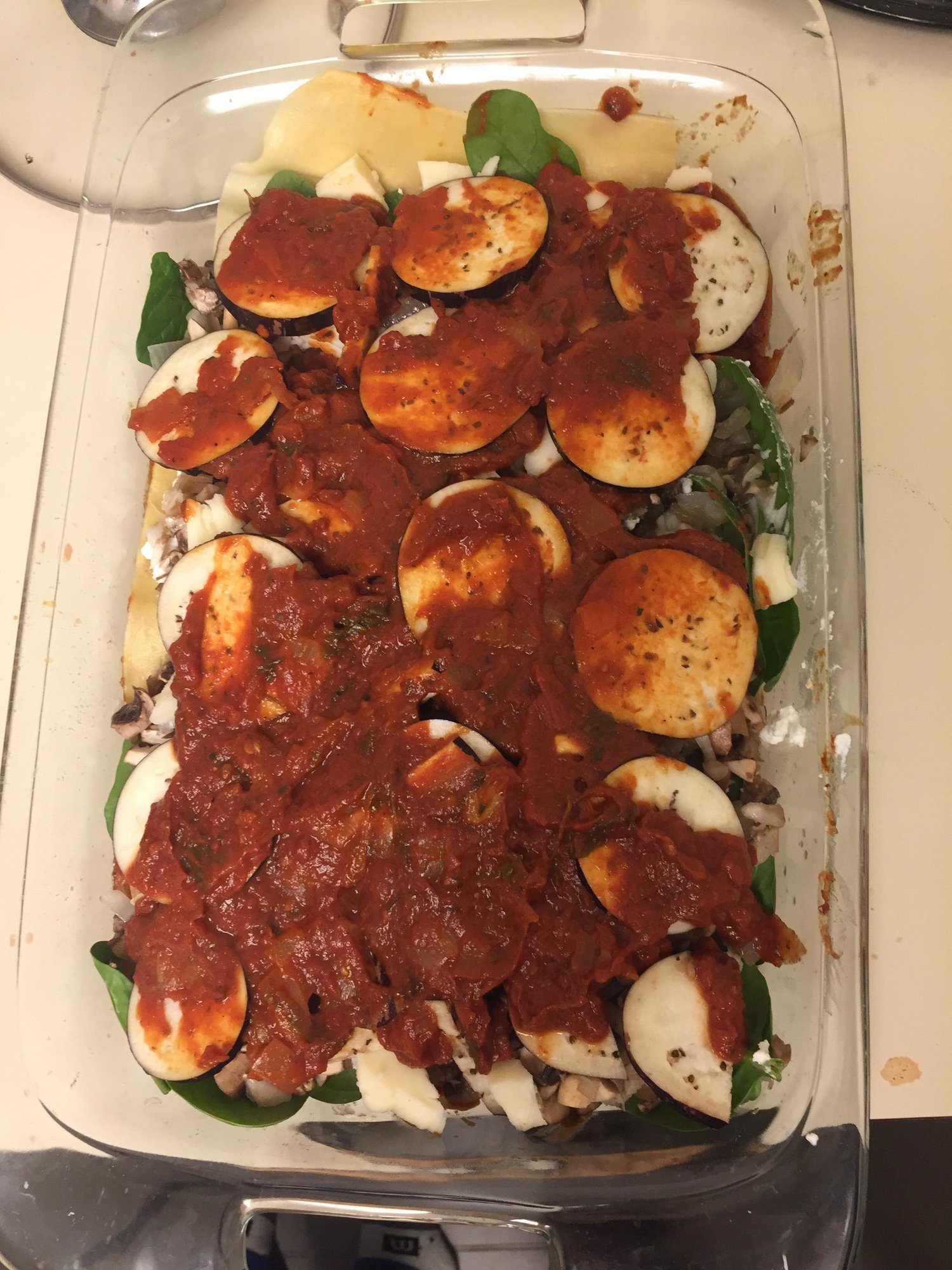
The below image shows a fully-constructed (but still uncooked) lasagna.
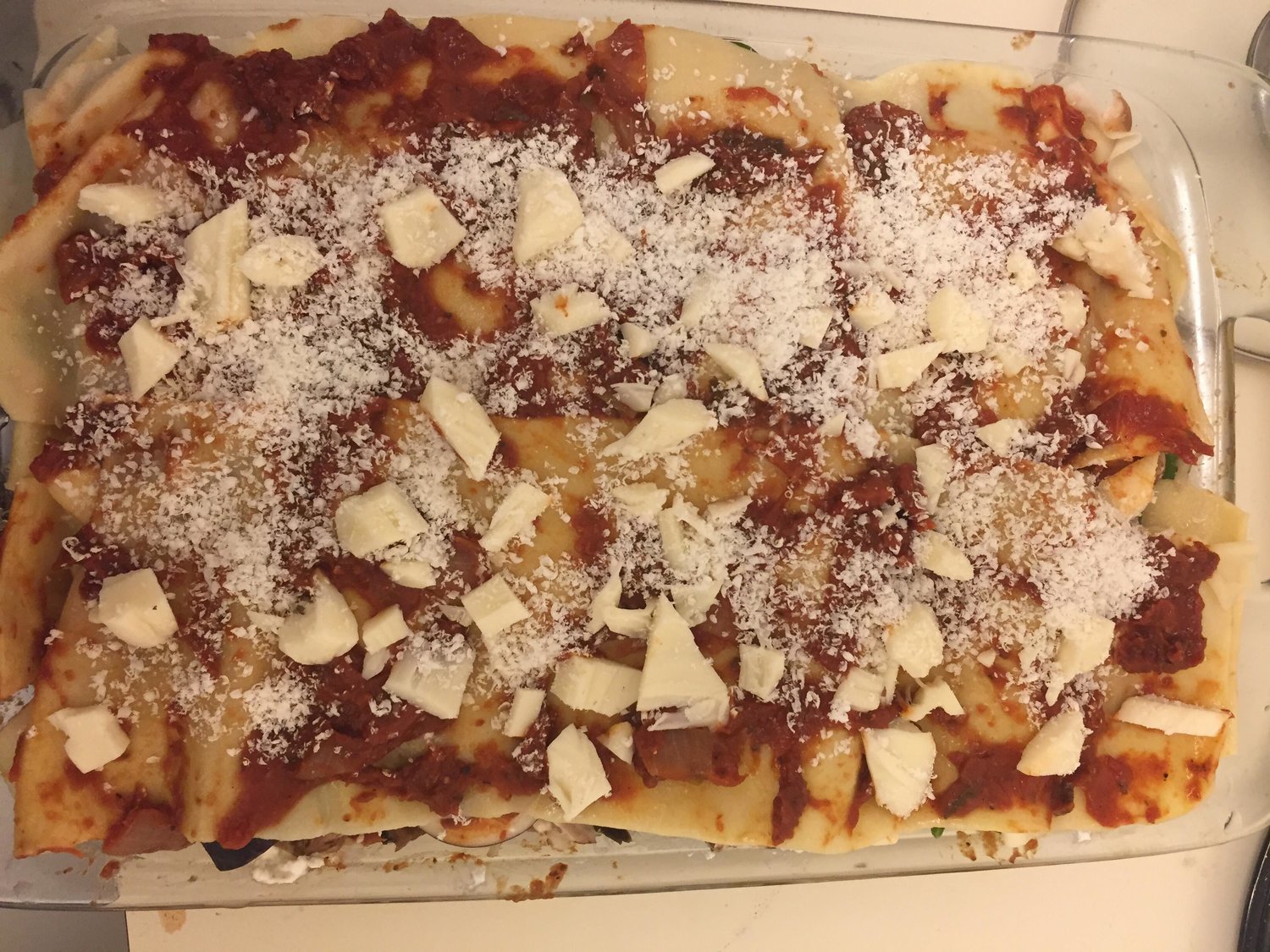
Finally, the lasagna is ready for cooking. The top of the baking tray was covered with aluminum foil and baked at 400F for 30 minutes. The foil was then removed, and the lasagna was allowed to bake for another 15 minutes. A slightly-charred lasagna emerged from the oven.
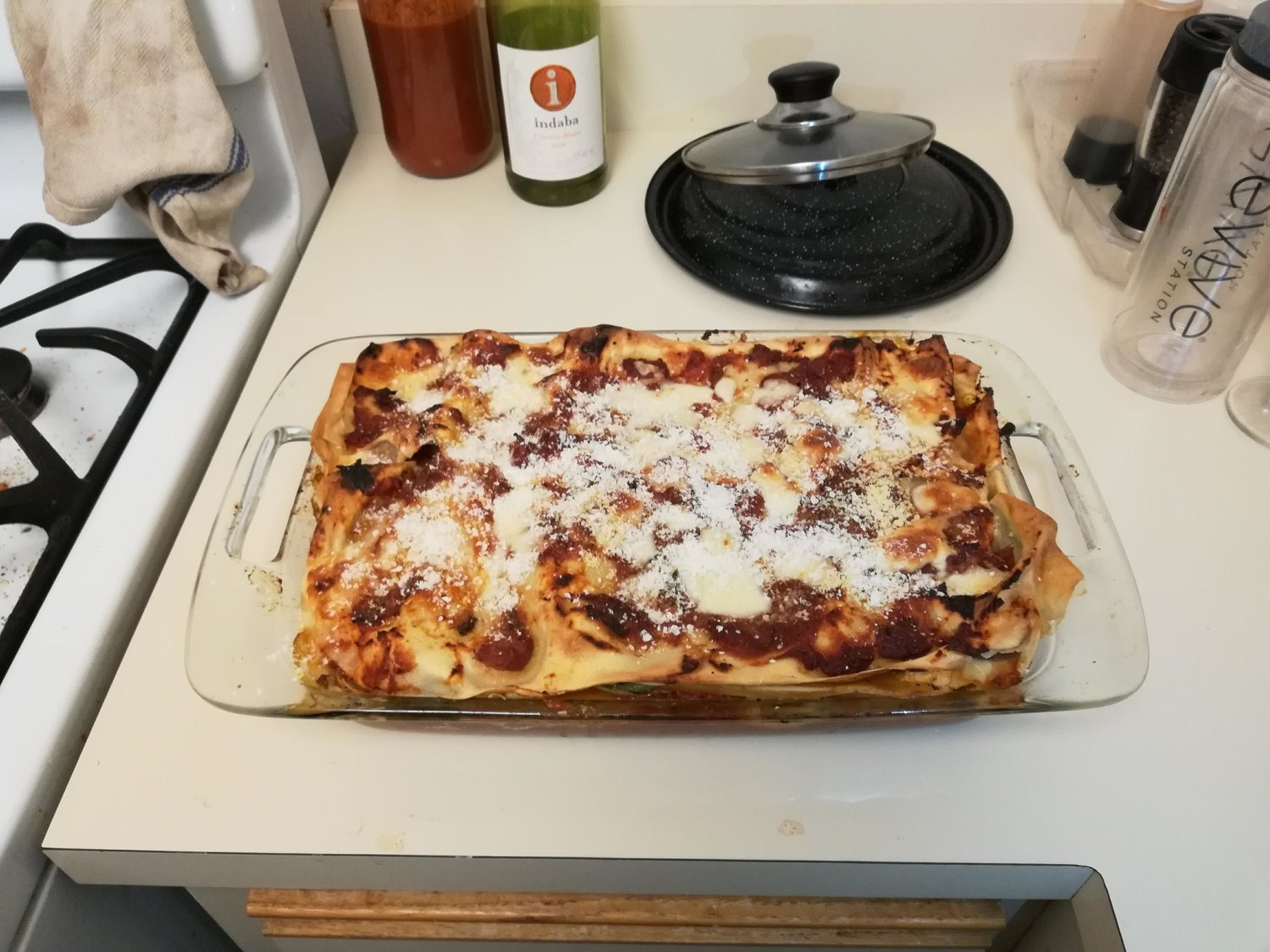
Lasagna tends to be difficult to cut cleanly, but RZ managed to slice a picturesque piece.
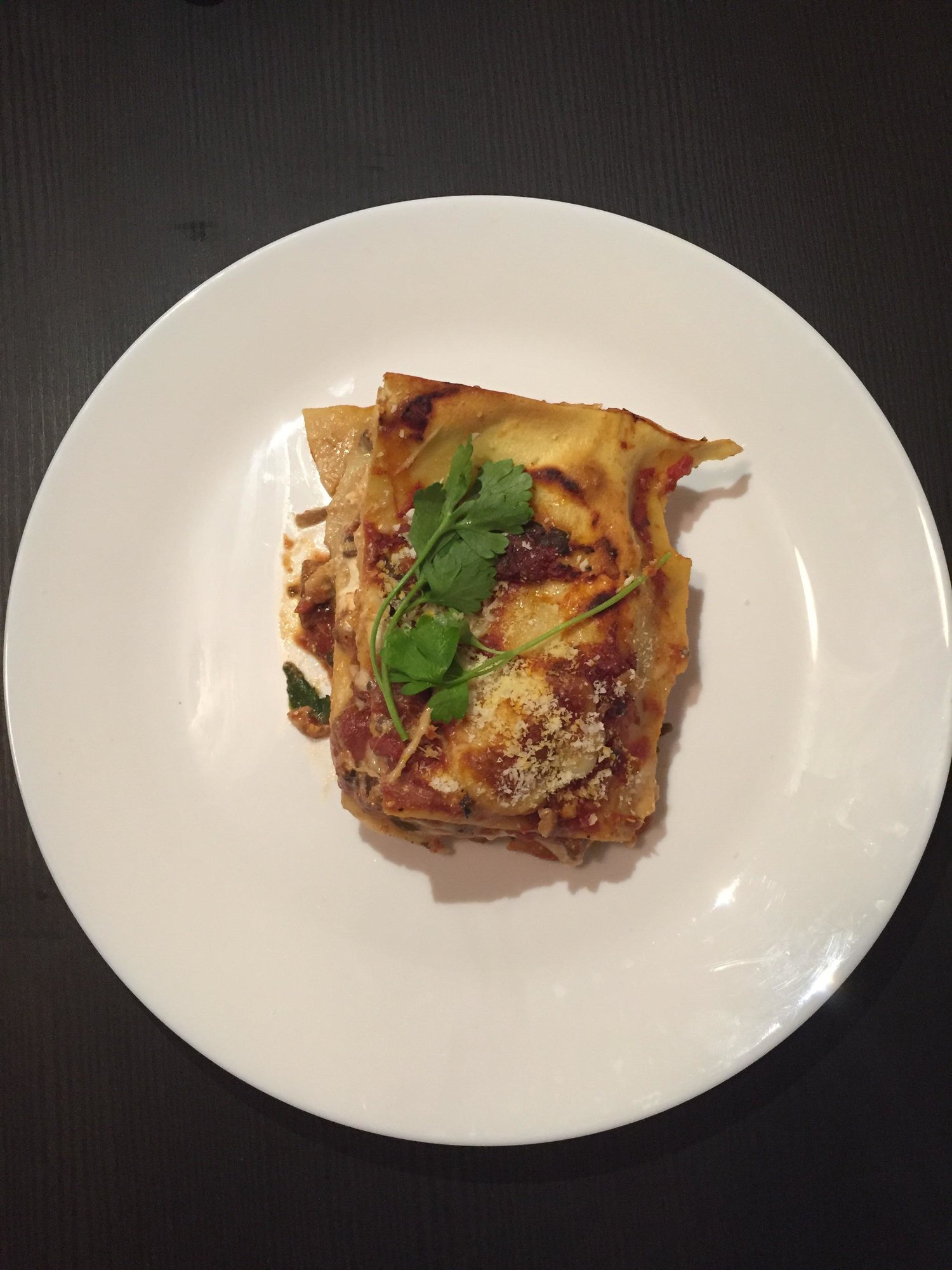
Analysis
This lasagna exceeded all our expectations. The eggplant and the mushrooms deliciously complement the tomatoes and cheese. Despite being a vegetable-based lasagna, it was still quite heavy. It was easy to forget that there was no meat in the dish!
I will also note that this recipe is significantly more tasty and fulfilling than my college lasagna recipe (although this version is significantly more time-intensive). My college recipe consisted of no-boil lasagna noodles layered with ground beef, jarred tomato sauce, and American cheese slices (my favorite was the American cheese with jalapenos embedded inside).
Some thoughts for next time:
- We did not have any red wine this time, but that may have been a good pairing for this meal.
- The spinach flavor was lost here, as we did not add much to the lasagna.
- Although the hand-made pasta was very tasty, it involved a significant time commitment. It is probably not worth it do make lasagna noodles by hand unless one has either a pasta maker or a lot of free time.
